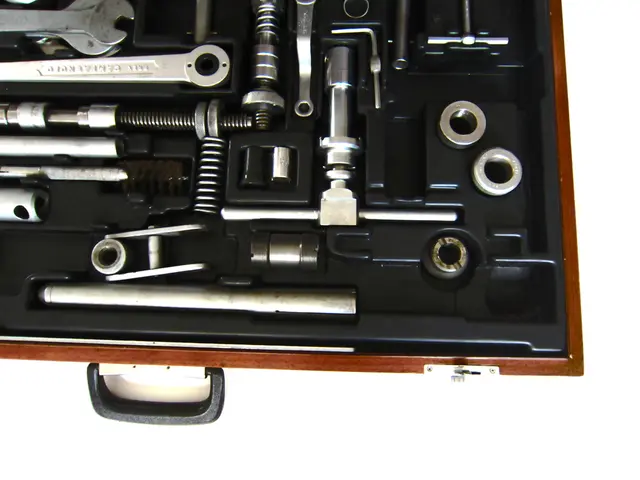Air Traffic Management Systems Malfunction at Newark Airport for Second Time
Revamped Radar Hiccups at Newark Airport: A Call for Modernization
Let's talk about the ongoing radar glitches at Newark Liberty International Airport in New Jersey that's been causing quite a stir, lately. ABC News uncovers a bizarre situation where the radar screens went black for approximately 90 seconds on a Friday morning, following a similar issue last week.
The exact time of the blackout on Friday was 3:55 a.m., as reported by the FAA via email. Interestingly, air traffic control for Newark is handled in Philadelphia, where the real screen outage took place. The FAA states that the issue was due to a telecommunications outage impacting communication and radar display. To prevent potential collisions, a private aircraft was directed to stay above 3,000 feet during the incident, according to ABC.
Recent troubles at Newark Airport have been more than just a nuisance. Delays, hazardous outages, and now recurring radar glitches—it's been quite a rollercoaster. A distressing outage on April 28 was so unsettling that over a half dozen air traffic controllers sought mental health support. As a result, they've been granted a break from work for up to 45 days.
The growing concerns over US air traffic control systems have lately grabbed attention, with Transportation Secretary, Sean Duffy, holding a press conference. Duffy emphasized the urgency for system upgrades and acknowledged Newark's plight, just a day before this morning's outage. "If we don't actually accomplish the mission that we're announcing today, you will see Newarks, not just in Newark, you'll see Newarks in other parts of the country because it's an aging system," Duffy shared during the conference.
The press conference was quirky, to say the least. Duffy called President Donald Trump on the phone, placing it on speakerphone, and holding it up to the microphone. Duffy spoke about his plans to build six new air traffic control centers and replace old equipment, mentioning that the current system still relies on copper wire rather than modern technology. He underscored that much of the equipment is from the 1970s, with some even dating back to the '80s.
To give you a picture of the dire situation, Duffy noted that there has been "decades of neglect" to US air traffic infrastructure, with a "patchwork of fixes" and "partial funding." Although this is true, Duffy failed to provide specifics regarding the costs. He merely mentioned that the upgrades will cost "billions." The task of acquiring funding from Congress may prove challenging given the current political landscape where crucial services often face funding cuts.
It's fascinating to see that obstructing funding for essential infrastructure such as this seems easier than rallying for its investment. Time will tell if Duffy and President Trump can secure significant funding for modernizing US air traffic control systems.
Insights:1. Interim Measures: Fiber optic data lines and slowing down air traffic have been deployed to reduce potential hazards during outages [2].2. Long-term Strategy: Proposed upgrades include building new air traffic control centers, enhancing communication and technology, replacing outdated radars, and implementing runway safety systems [1]. These improvements aim to modernize the US air traffic control system, minimize outages, and boost system reliability [1].
- The ongoing radar issues at Newark Liberty International Airport, as highlighted by ABC News, sparked calls for modernization.
- The recent FAA-reported radar display outages in Philadelphia, affecting air traffic control for Newark, were caused by telecommunications outages.
- Gizmodo could discuss the role of modern technology in preventing such outages and improving the technology used in US air traffic control systems.
- Delays, outages, and radar glitches at Newark have prompted Transportation Secretary Sean Duffy to emphasize the necessity for system upgrades, citing an aging infrastructure.
- Duffy's plans for modernization involve building new air traffic control centers, enhancing communication and technology, and replacing outdated radars.
- Politics may pose challenges for securing funding for the desired upgrades to US air traffic control systems, as critical services often face funding cuts in the current political landscape.




